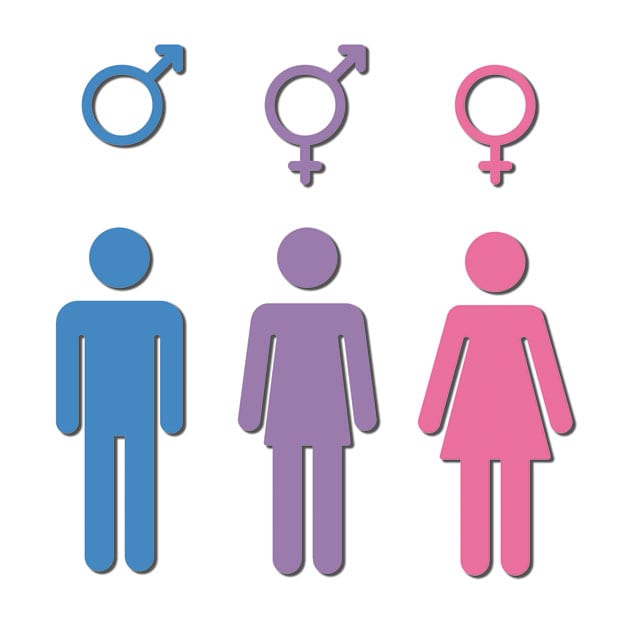Gender-neutral facilities are so hard to adjust to, after all

 As I pushed open to door of the men’s restroom, I was met by a woman who was just leaving. It was a little bit of a shock, but then I remembered that the signs had included the words “Gender Neutral Restroom.”
As I pushed open to door of the men’s restroom, I was met by a woman who was just leaving. It was a little bit of a shock, but then I remembered that the signs had included the words “Gender Neutral Restroom.”
You see, I was attending the Woodhull Sexual Freedom Summit in Washington, D.C. over weekend, and the hotel had agreed to make the change to gender-neutral facilities throughout the conference areas to accommodate our attendees.
When I say “we,” I refer to the fact that I am co-chair of the Woodhull Freedom Foundation, organizer of the annual conference. As believers in social justice for all sexual orientations and gender identities and forms of expression, having gender-neutral restrooms was a natural extension of what we stand for.
But surprisingly enough, I hadn’t experienced gender-neutral restrooms prior to our conference.
I guess I assumed that only transwomen and transmen would be affected by the change, But I forgot the word “neutral” is pretty hard to misinterpret.
Since we have a large number of women attending — both cisgender and transgender — the initiative also had the bonus effect of eliminating the “potty parity” problem all facilities face:
Most men never have to wait more than a few moments for a urinal or stall at a public event, but women’s restrooms are notoriously too small and with too few stalls for a crowd.
As the weekend progressed, I became more and more comfortable with the occasional woman in what was previously the “men’s” room. And frankly, so did everyone else.
Why the American psyche is too fragile to deal with people of either gender in a restroom has long puzzled some Europeans. When I was a teenager, my family visited France, and I distinctly remember walking into the restroom at the Paris Opera and seeing women walk past the row of men at the urinals to access the stalls. Today, unisex toilets are common throughout the continent, though most are single-stall facilities.
Meanwhile, back at our conference, I still found myself going only into the facility that had previously been the “men’s room,” never quite getting up the nerve to visit the other gender-neutral restroom. I suspect I would have felt uncomfortable there, perhaps because the last time I was in a women’s restroom was when I was 3 years old and accompanied by my mother.
Even at 3, I felt somehow my masculinity was being challenged by using the women’s restroom — and maybe that is the problem. Why does a sign on a door say anything about our gender anyway?
Woodhull’s weekend conference went off without a single bathroom scandal, and though I know it was more of a statement than a practical solution, the unisex bathrooms did dispel a few fears.
No women were assaulted while in the restroom and no men were solicited. No transgender people were made to feel uncomfortable, and no one was stigmatized for using the wrong restroom.
Though I suspect it will be years before a multi-stall restroom in a public space is actually specified to be gender neutral, our experiment showed it is possible. And while that’s not surprising, considering that our attendees are enlightened individuals when it comes to sex and gender, I am pretty sure that the general public could adapt pretty easily.
Our curious obsession with bathrooms in America leads to some real problems, specifically political ones. The specter of the “man in the ladies room” is always good for a few votes, and lately it is being trotted out both as a fear tactic to drive people to the polls and in bone-headed laws also intended to generate support for an otherwise failed elected official.
Until we get over our obsession with gender and who’s in what bathroom, we will always stigmatize transgender people as potential threats to the “sanctity of the toilet.” We need to admit that restrooms are good for two things — relieving ourselves and washing our hands — and neither of the two should be the basis for public policy.
This article appeared in the Dallas Voice print edition August 12, 2016.

